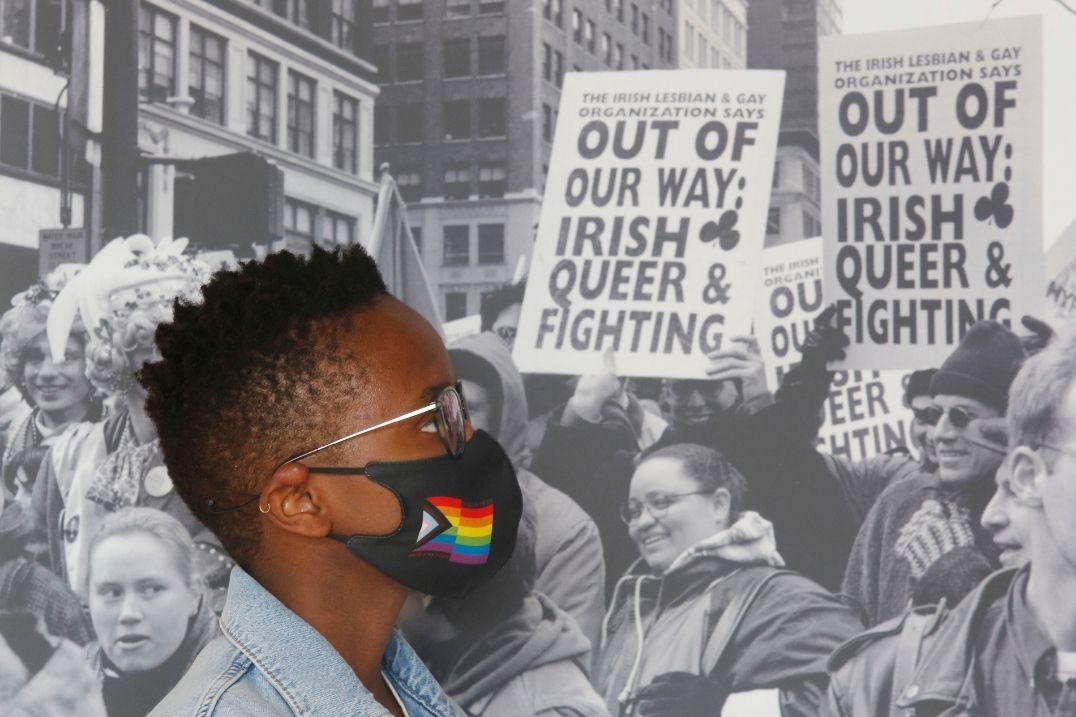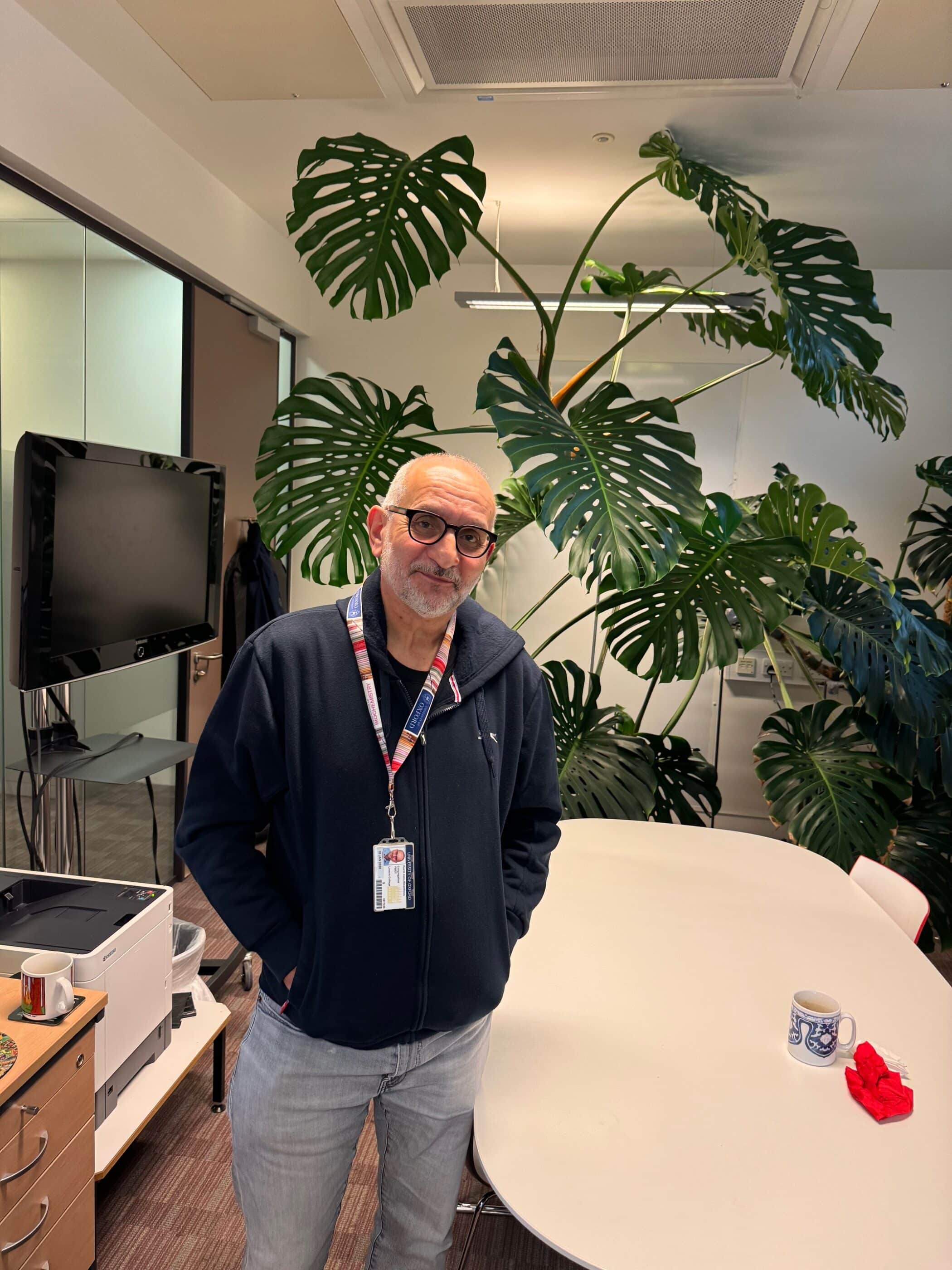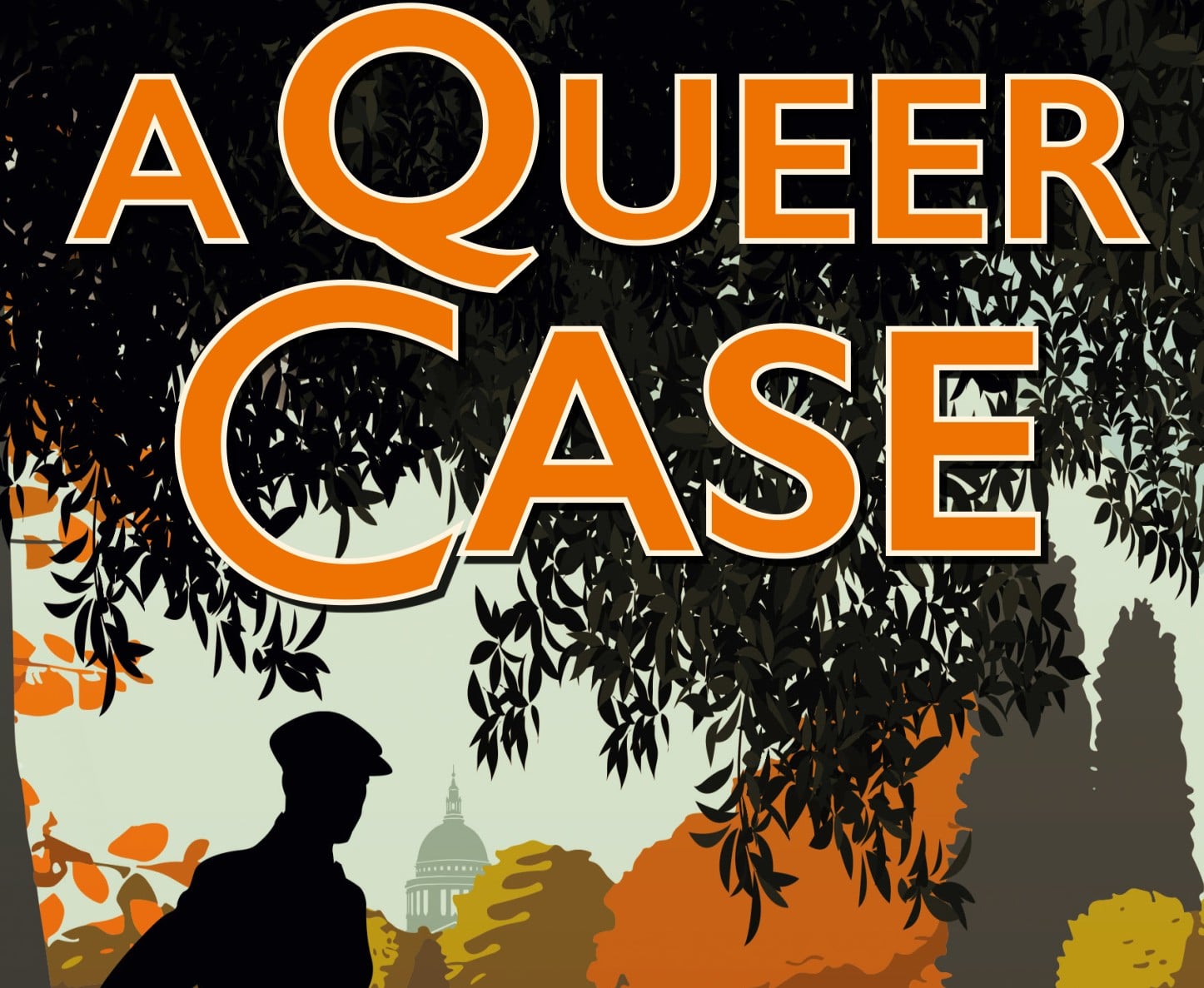LGBTQ+ History Month is marked across the UK throughout February as an opportunity to connect and reflect on the past and present of the LGBTQ+ Community, celebrate LGBTQ+ culture and explore what the lessons of history can teach us for the future.
Alumna, Shannon Wilson, is the Head of Education and Outreach at EPIC The Irish Emigration Museum in Dublin. When the museum launched a temporary exhibition called Out in the World: Irelands LGBTQ+ Diaspora, it was Shannon’s role to interpret the exhibition for wider audiences including schools and families visiting the museum. In the below article, she shares with us her experience.
In 2021, EPIC The Irish Emigration Museum in Dublin, Ireland launched a temporary exhibition called Out in the World: Irelands LGBTQ+ Diaspora. This exhibition, researched and curated by fellow Oxford graduate Dr. Maurice J Casey and funded by the Irish Department of Foreign Affairs, detailed the lives of 12 Irish LGBTQ+ figures across six themes – love, solidarity, community, defiance, exclusion and return.
As Head of Education and Outreach, it was my job to interpret this exhibition for wider audiences including schools and families visiting the museum. Often the complex issues explored by temporary exhibitions are difficult to connect beyond the core target audience, something I first encountered during my time at the Pitt Rivers Museum in Oxford on the MSc Visual, Material and Museum Anthropology.
The dilemma was as follows: how to engage students, particularly the 14 – 18 demographic, and, what had we to offer to this conversation that other organisations such as ShoutOut and BeLonG To (Irish LGBTQ+ charities specialising in this type of education) weren’t already doing?
While our expertise was not in representing LGBTQ+ histories in particular, as a museum of emigration our strength was somewhat aligned: mediating the stories of another minority group, migrants. Both groups experience issues concerning contested history, discrimination, lack of representation, exclusion, persecution, belonging and community, among more. The thread that ties these issues to a wider public? Human rights.
Human rights is an issue that is covered in schools as part of their Civic, Social and Political Education. It is also something that teenagers are inherently placed to care about. Teenagers themselves are a minority group within a broader society, with different laws and rules (both societal and familial) that impact their daily experience. They are often judged by others for their demographic alone – for instance, if you look up the term ‘youths’ in the online Oxford Languages dictionary, the second example is “he was attacked by a gang of youths”.
Due to fear of persecution or otherwise, many figures hid their LGBTQ+ identity. Therefore, in numerous exhibitions concerning these histories, official police, court and psychological records are heavily relied on for evidence. This requires a lot of detective work, and can’t be said to be an objective truth. It’s an issue we come up with time and time again in the museum – how to apply new terminology to historical figures, with the knowledge that people may not have identified in this manner. While we’ve specifically worked with groups such as TENI (Transgender Equality Network of Ireland) and ShoutOut to try to combat these issues, pretending we have the definitive answers to these questions is futile. However, this difficulty is something that teenagers innately understand. Theirs is a world where identity often comes with a hierarchy of judgement, from both external groups and their fellow peers.
To attempt to combat this in Out in the World, the curator Casey only wanted to use sources that allowed people to speak about their experience directly, on their own terms. This is something we mirrored in the education programme. Taking the students as a minority group themselves, we spoke to them directly about their experiences of human rights in the hopes that we could mediate them – just like we do with all the stories we tell in the museum.
Working with a few different school groups from the local area, we asked them questions such as: Did they ever feel discriminated against? If so, when, where and how? Did they feel represented fairly in wider society? Why/why not? When and how did they feel excluded, was this in their own peer group or wider? What did the terms ‘solidarity’, ‘allyship’ and ‘community’ mean to them? We then connected their experience with those in the exhibition by getting them to retell those stories that most closely mirrored their own.
As Narrative4 and other organisations researching empathy building have demonstrated, people are more responsive to stories if they tell them as their own. So, students who felt excluded retold stories of the St. Patrick’s Day Battle in New York, where LGBTQ+ groups were forbidden to participate until 2016. Those who partook in protests recounted tales of the Stonewall Rebellion in 1969. Those who felt judged because of their identity read about Albert Cashier, an American Civil War soldier who was forced to live as a woman the last few years of his life. We also discussed moments of connection and community, sharing stories of love, solidarity and return, such as Eva Gore Booth and Esther Roper, a couple who met in Italy in 1896, and Home to Vote, a social media campaign in Ireland that urged Irish people abroad to return home to vote for same-sex marriage in 2015.
However, not everyone feels that they encounter these issues directly or commonly. Therefore, we were left with one defining question: how to bring these experiences to life for others? With the help of the students, we set about creating scenarios that allowed people a window into their daily experience. We acted out team game scenarios, where every student had a turn at being picked last. We set up a dialogue where the communicating parties could not speak the same language (through a simple restriction of the use of certain letters such as ‘e’ and ‘i’). We constructed ‘unsafe’ spaces filled with common fears – such as spiders, clowns and heights – and worked to create the ultimate ‘safe space’ to counteract this, filled with fluffy pillows, beds, music and gaming consoles. We attempted to create a sense of community by sharing a common love of something – such as a food, animal or hobby. We listened to each other’s stories and sought out ‘windows’ (differences) with which we could create a sense of allyship, in the hopes to all learn something new.
The result was the Out in the World Resource Pack and two workshops: Out in the World and You in the World.
I learned a lot from this experience. I encountered the power behind the same process – how through retelling the stories of teenagers, I gained a greater understanding and empathy of their experience. I witnessed how an embodied, active style of learning appealed more to this demographic than reading and writing, something they get enough of in the classroom. However, what struck me most was that while experiences may seem different because of the context in which they are framed – in this case, an exhibit about the Irish LGBTQ+ diaspora – there are always points of commonality to be found because we are all human, and human rights is an issue concerning all of us.
You can find out more about EPIC The Irish Emigration Museum’s Education Programmes on epicchq.com. To discover more about the Out in the World Exhibition, head to outintheworld.ie


















